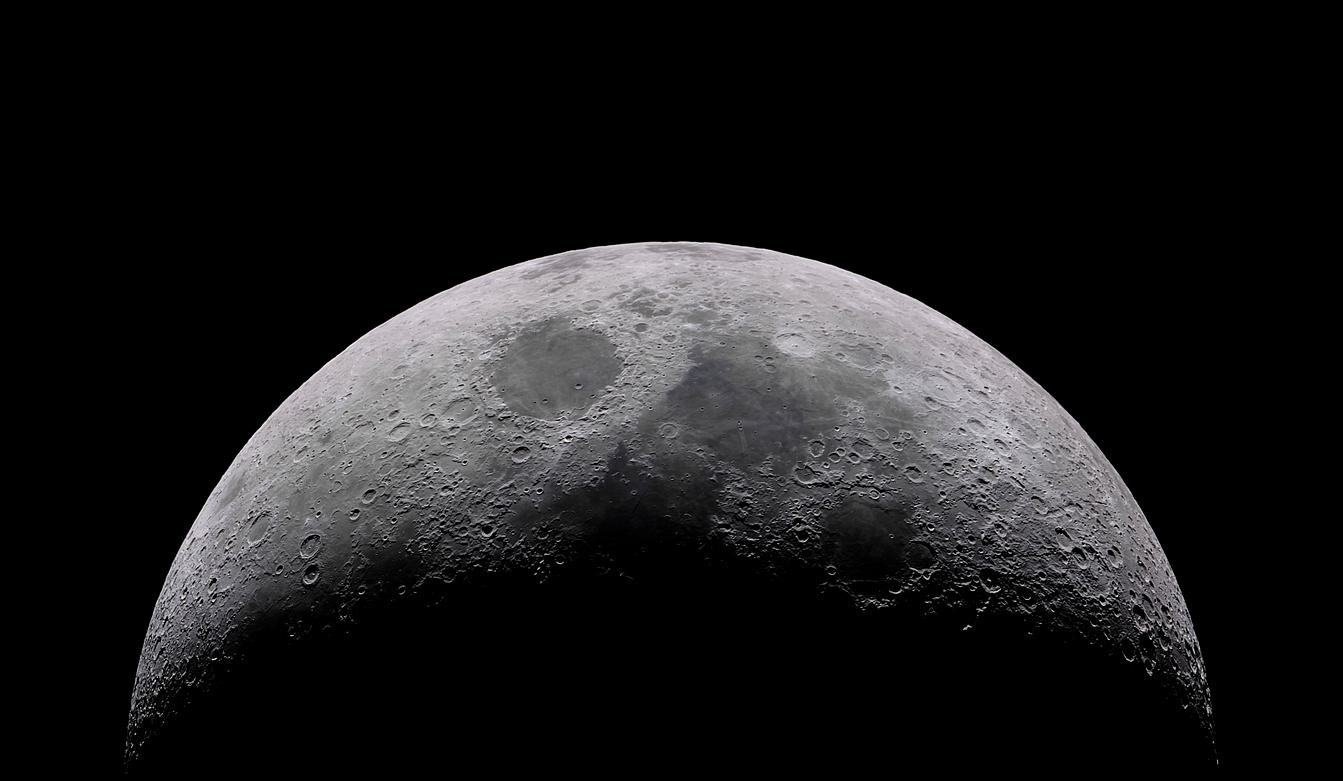NASA-funded scientists have discovered shaded locations within pits on the moon's surface that always hover around a comfortable 63 degrees Fahrenheit using data from NASA’s Lunar Reconnaissance Orbiter (LRO) spacecraft and computer modeling.
The pits and caves to which they may lead could potentially become home to future astronauts living and working on the moon. The thermally stable caves would be far more comfortable than the lunar surface itself, which heats up to 260 degrees during the lunar day and cools to minus 280 degrees at night.
NASA is committed to returning to the moon before the end of this decade.
NASA’s Lunar Reconnaissance Orbiter Camera has now imaged the Marius Hills pit three times, each time with very different lighting.
The pits were first discovered on the moon in 2009, and since then, scientists have wondered if they led to caves that could be explored or used as shelters. The pits or caves would also offer some protection from cosmic rays, solar radiation and micrometeorites.
“About 16 of the more than 200 pits are probably collapsed lava tubes,” said Tyler Horvath, a doctoral student in planetary science at the University of California, Los Angeles, who led the new research, which was recently published in the journal Geophysical Research Letters.
“Lunar pits are a fascinating feature on the lunar surface,” said LRO Project Scientist Noah Petro of NASA’s Goddard Space Flight Center in Greenbelt, Maryland. “Knowing that they create a stable thermal environment helps us paint a picture of these unique lunar features and the prospect of one day exploring them.”
Lava tubes, also found on Earth and Mars, form when molten lava flows beneath a field of cooled lava or a crust forms over a river of lava, leaving a long, hollow tunnel. If the ceiling of a solidified lava tube collapses, it opens a pit that can lead into the rest of the cave-like tube.
Two of the most prominent pits have visible overhangs that clearly lead to caves or voids, and there is strong evidence that another pit's overhang may also lead to a large cave.
“Humans evolved living in caves, and to caves we might return when we live on the moon,” said David Paige, a co-author of the paper who leads the Diviner Lunar Radiometer Experiment aboard LRO that made the temperature measurements used in the study.
Horvath processed data from Diviner — a thermal camera — to find out if the temperature within the pits diverged from those on the surface.
The Marius Hills pit is about 34 meters (about 111 feet) deep and 65 by 90 meters (approximately 213 by 295 feet) wide.
The Mare Tranquillitatis pit crater is a roughly cylindrical 328-foot (100-meter)–deep depression about the length and width of a football field. Horvath and his colleagues used computer modeling to analyze the thermal properties of the rock and lunar dust to chart the pit’s temperatures over time.
The results revealed that temperatures within the permanently shadowed reaches of the pit fluctuate only slightly throughout the lunar day, remaining at around 63 F or 17 C. If a cave extends from the bottom of the pit, as images taken by LRO’s Lunar Reconnaissance Orbiter Camera suggest, it too would have this relatively comfortable temperature.
The team, which also included UCLA professor of planetary science David Paige and Paul Hayne of the University of Colorado Boulder, believes the shadowing overhang is responsible for the steady temperature, limiting how hot things get during the day and preventing heat from radiating away at night.
A day on the moon lasts about 15 Earth days, during which the surface is constantly bombarded by sunlight and is frequently hot enough to boil water. Brutally cold nights also last about 15 Earth days.
The research was funded by NASA’s Lunar Reconnaissance Orbiter project, Extended Mission 4. LRO is managed by NASA's Goddard Space Flight Center in Greenbelt, Maryland, for the Science Mission Directorate at NASA Headquarters in Washington. Launched on June 18, 2009, LRO has collected a treasure trove of data with its seven powerful instruments, making an invaluable contribution to our knowledge about the moon. Diviner was built and developed by the University of California, Los Angeles, and NASA's Jet Propulsion Laboratory in Pasadena, California.
NASA is scheduled to launch the Artemis mission to travel around the moon. This Artemis mission is unmanned and is being done to test systems prior to an eventual manned lunar mission that will include launching the first woman and person of color to the moon. Artemis will be launched by the Space Launch System — the most powerful rocket ever built.
Much of the work on Artemis and the Space Launch System has been done by NASA employees and contractors in Huntsville. The Marshall Space Flight Center has been at the center of the space program since it was founded in 1960.
Some 6,000 people work at the Marshall Space Flight Center.
To connect with the author of this story, or to comment, email brandon.moseley@1819News.com.
Don’t miss out! Subscribe to our newsletter and get our top stories every weekday morning.










